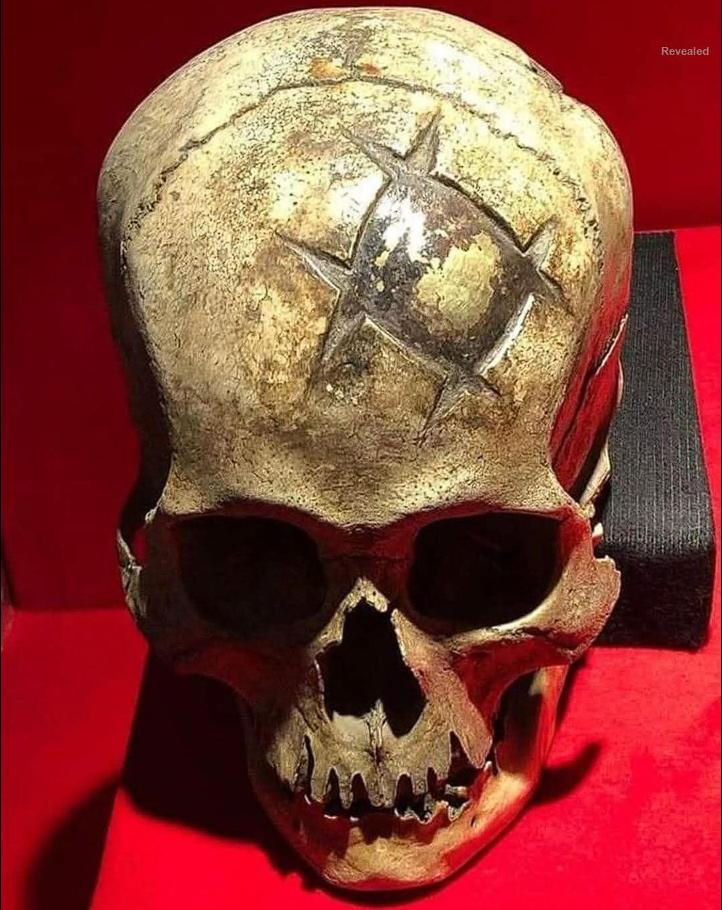The Golden Skull: Inca Surgery That Defied Time
In a quiet gallery of the Museum of Gold in Lima, Peru, there lies an object that feels more science fiction than ancient artifact—a human skull, 1,600 years old, bearing a perfectly cut hole in the cranium. But what stuns viewers isn’t just the hole.
It’s the gold.
This skull is the remnant of a patient who underwent trepanation, a surgical procedure where a portion of the skull is deliberately removed. But unlike many ancient examples found around the world, this one shows something extraordinary: the hole was sealed with a gold plate.
Ancient Trepanation: Surgery with Precision
Trepanation is one of the oldest known forms of surgery, practiced across many ancient cultures—from Polynesia to Greece. But the Inca took it to astonishing heights. This skull shows clear evidence that not only was the procedure performed with precision, but also that the patient survived.
How do we know? Because the bone healed.
That kind of healing doesn’t happen post-mortem—it’s the result of the body actively repairing itself. In other words, this wasn’t a ritual offering. It was real, life-saving neurosurgery.
Gold as Medicine—and Meaning
The use of gold to seal the cranial opening adds a layer of mystery and mastery. Was it meant to protect the brain physically? Did it serve a spiritual purpose? Or was it a combination of both—medicine and meaning fused in a single gleaming patch?
For the Inca, gold wasn’t just a symbol of wealth. It was a material connected to the sun, the gods, and the sacred. Its use in this procedure shows not only surgical skill but also a deep understanding of healing as a holistic act—one that treated body, soul, and society.
A Testament to Ancient Brilliance
This skull is more than an artifact. It’s a quiet revolution in our understanding of ancient medicine. It challenges modern assumptions that pre-Columbian societies were primitive or unscientific.
They weren’t.
They were daring. Ingenious. Fearless in the face of pain, and profoundly aware of the human body.
Conclusion: When Science Meets Spirit in the Andes
Today, the golden skull rests behind glass, but its story remains loud and clear. In the high Andes, long before modern medicine, there lived a people who cut open the human skull and then healed it—not just with skill, but with gold.
It’s a story of pain, hope, and survival. And it reminds us that the ancient world wasn’t behind us—in some ways, it was way ahead.

CÁC TIN KHÁC
Mary Walton: The Forgotten Inventor Who Helped Clean Up America’s Cities
Tomb of Queen Nefertari in the Valley of the Queens, Egypt
Discover the Hypostyle Hall of the Temple of Hathor at Dendera
Venus de Losange: Unveiling the Mystery of a 20,000-Year-Old Paleolithic Icon